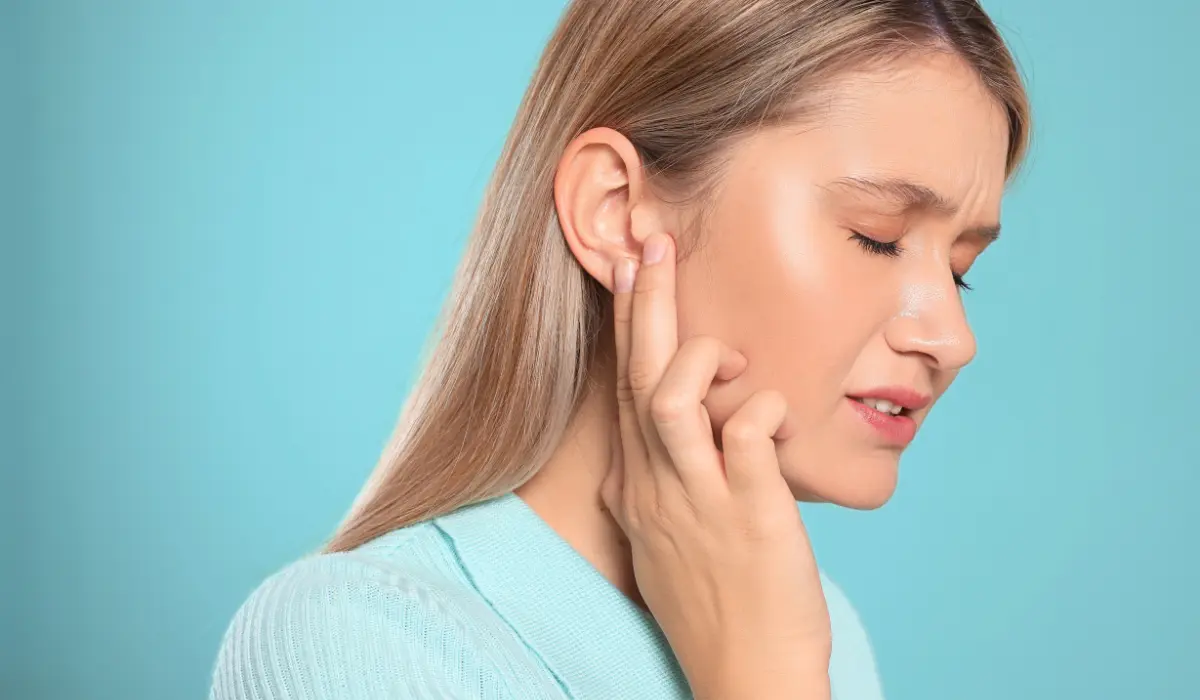When you’re dealing with a ruptured eardrum, proper rest and care are essential for a smooth healing process. One of the most crucial aspects of managing this condition is ensuring that you sleep on the correct side – the side without the ruptured eardrum.
Failing to do so can not only prolong your recovery but also lead to further complications. In this article, we’ll explore the importance of sleeping on the unaffected side and provide tips to help you find a comfortable sleeping position during this time.
Understanding A Ruptured Eardrum
A ruptured eardrum, also known as a perforated tympanic membrane, is a tear or hole in the thin membrane that separates the outer ear from the middle ear.

This condition can occur due to various reasons, such as:
- Trauma to the ear (e.g., a sudden loud noise, a cotton swab accident, or a physical blow)
- Ear infections (e.g., middle ear infections or acute otitis media)
- Sudden changes in pressure (e.g., during air travel or diving)
Symptoms of a ruptured eardrum may include:
- Ear pain or discomfort
- Drainage from the affected ear
- Ringing or buzzing sounds in the ear (tinnitus)
- Temporary hearing loss or muffled hearing
While some small perforations may heal on their own, larger ones often require medical attention to prevent further complications, such as ongoing ear infections or permanent hearing loss.
Importance Of Sleeping On The Unaffected Side
When you have a ruptured eardrum, it’s essential to sleep on the side without the injury. This position helps prevent further damage and allows the eardrum to heal properly. Here’s why it’s crucial:
Sleeping on the unaffected side prevents drainage and infection by keeping fluid away from the middle ear. It also avoids putting pressure on the ruptured eardrum, which can slow down healing or cause additional harm. Additionally, keeping the affected ear elevated promotes better airflow, preventing the buildup of fluid or debris that could impede healing.
Finding A Comfortable Sleeping Position
While sleeping on the unaffected side is essential, it’s also important to find a comfortable position that allows you to get quality rest. Here are some tips to help you achieve this:
Risks Of Sleeping On The Affected Side
If you sleep on the side with a ruptured eardrum, you may experience various risks and complications, including:
1. Delayed healing: Sleeping on the affected side can put pressure on the eardrum, preventing it from healing properly and prolonging the recovery process.
2. Increased pain and discomfort: The weight of your head on the affected ear can cause additional pain and discomfort, making it difficult to get restful sleep.
3. Potential for infection: Sleeping on the affected side can allow drainage or fluid to enter the middle ear, increasing the risk of infection and further complications.
4. Worsening of symptoms: Sleeping on the affected side can exacerbate symptoms such as tinnitus, dizziness, or vertigo, making it harder to manage the condition.
Alternative Sleeping Positions
If you find it challenging to sleep on your unaffected side, consider trying alternative sleeping positions that keep the affected ear elevated and avoid putting pressure on it. Some options include:
1. Back sleeping: Sleeping on your back can be a good alternative, especially if you prop up your head and the affected ear with pillows.
2. Reclining position: If you have an adjustable bed or recliner, you can elevate your head and keep the affected ear upright while still being comfortable.
3. Elevated side position: If you prefer side sleeping, try elevating your head and the affected ear with pillows or a specialized wedge pillow.
Lifestyle Changes To Promote Healing
In addition to proper sleep positioning, there are several lifestyle changes that can aid in the healing process of a ruptured eardrum:
- Avoid water exposure: Refrain from swimming, showering, or getting water in the affected ear until the eardrum has fully healed.
- Protect the ear: Use earplugs or a cotton ball with petroleum jelly when bathing or washing your hair to prevent water from entering the ear canal.
- Avoid loud noises: Loud noises can further damage the eardrum or cause discomfort, so try to minimize exposure to loud environments.
- Quit smoking: Smoking can impair the healing process and increase the risk of complications, so it’s best to quit or avoid secondhand smoke.
- Follow medical advice: Be sure to follow your healthcare provider’s instructions regarding medication, ear drops, or any other treatment recommendations.
Also Read: Can Wisdom Teeth Cause Ear Pain? Exploring The Link Between Them!
Conclusion
Sleeping on the correct side with a ruptured eardrum is a crucial step in the healing process. By following the advice of sleeping on the unaffected side and making necessary lifestyle changes, you can promote faster recovery and prevent further complications.
Remember to be patient and consistent with your sleep positioning, as it may take several weeks for the eardrum to fully heal. If you experience persistent pain, drainage, or other concerning symptoms, don’t hesitate to consult your healthcare provider for further evaluation and treatment.





